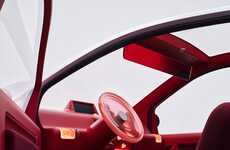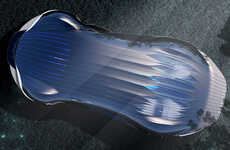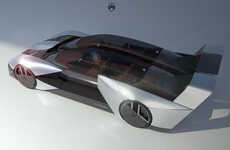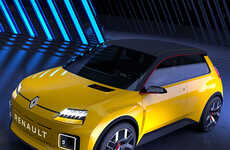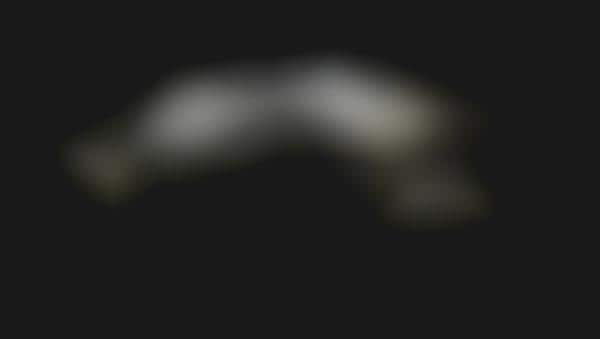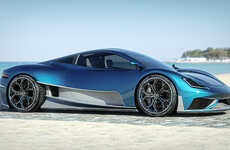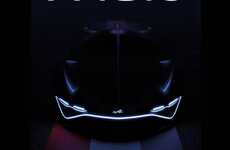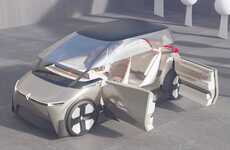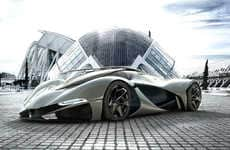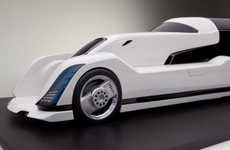
The Renault Moister was Aesthetically Inspired by the H2O Molecule
Amelia Roblin — October 22, 2013 — Autos
References: yankodesign
The Renault Moister well and truly embodies the earth-conscious mentality behind its development. This eco-friendly vehicle runs on hydrogen power as a brilliant sustainable fuel, and it is the chemistry behind it that influenced its intriguing organic design.
Yang Min-Seok came up with a molecular model for this concept car that makes the automobile look like a compound of hydrogen and oxygen atoms. The liquid water state of the substance was admired for its natural fluidity, and this is what inspired the undulating body of the ultramodern subcompact.
The Renault Moister is accented with strips of bright blue light and abstract speckles applied to its streamlined back. Certainly a vehicle of the future, the aerodynamic conveyance features fish-eye side windows and hubless wheels for an innovative and amphibious appearance.
Yang Min-Seok came up with a molecular model for this concept car that makes the automobile look like a compound of hydrogen and oxygen atoms. The liquid water state of the substance was admired for its natural fluidity, and this is what inspired the undulating body of the ultramodern subcompact.
The Renault Moister is accented with strips of bright blue light and abstract speckles applied to its streamlined back. Certainly a vehicle of the future, the aerodynamic conveyance features fish-eye side windows and hubless wheels for an innovative and amphibious appearance.
Trend Themes
1. Hydrogen-powered Vehicles - The use of hydrogen power as a sustainable fuel for automobiles presents a disruptive innovation opportunity in the automotive industry.
2. Organic Design - The incorporation of natural fluidity and undulating forms in automobile design creates a disruptive innovation opportunity for aesthetic-focused industries.
3. Amphibious Vehicles - The development of vehicles with an innovative and amphibious appearance opens up disruptive innovation opportunities in the transportation industry.
Industry Implications
1. Automotive - Hydrogen-powered vehicles disrupt the traditional fuel-powered automobile industry.
2. Design - Organic design in automobiles disrupts the conventional approach to vehicle aesthetics.
3. Transportation - The creation of amphibious vehicles disrupts the traditional boundaries of transportation modes.
4.7
Score
Popularity
Activity
Freshness

